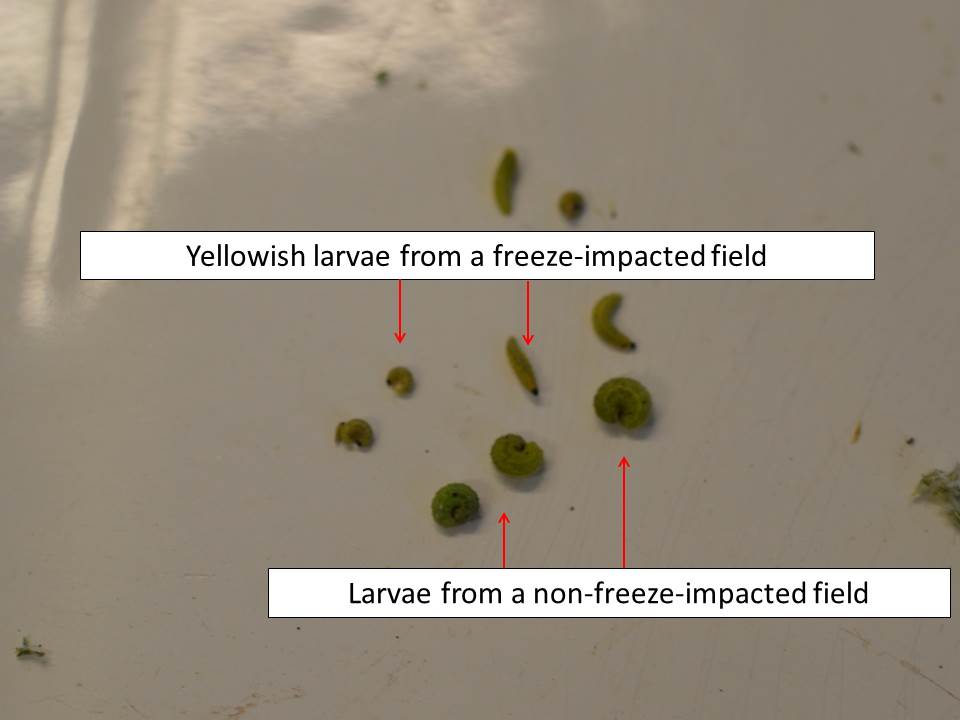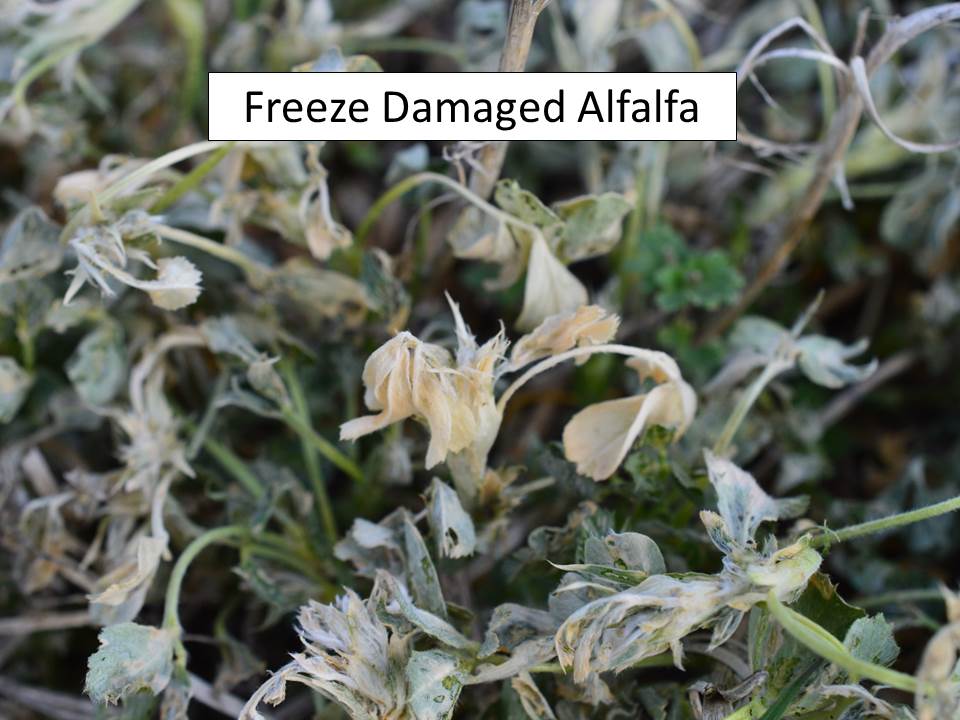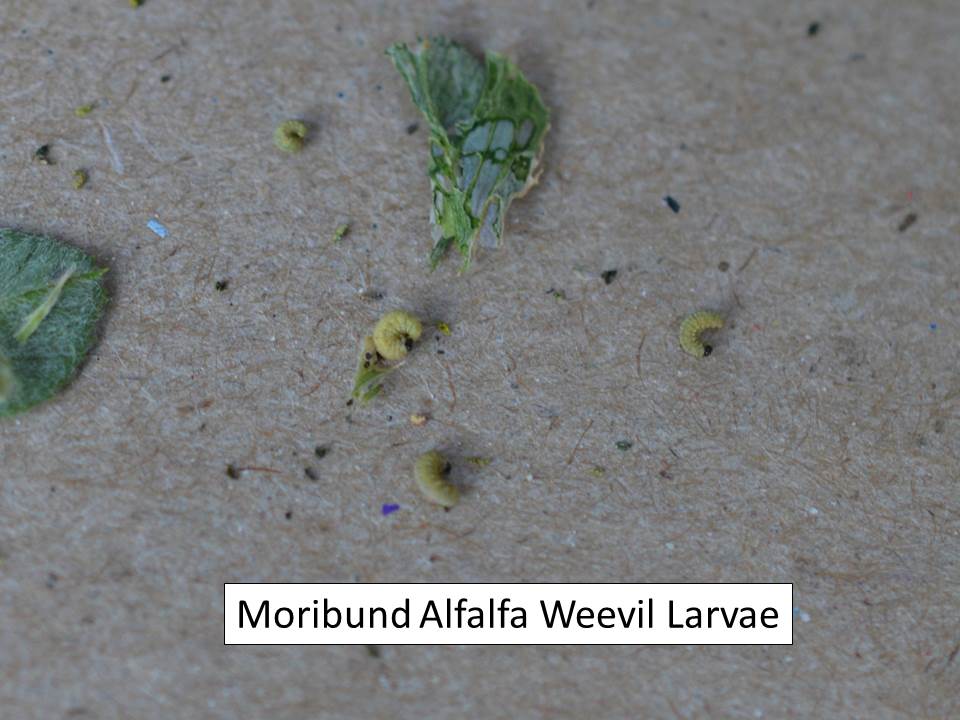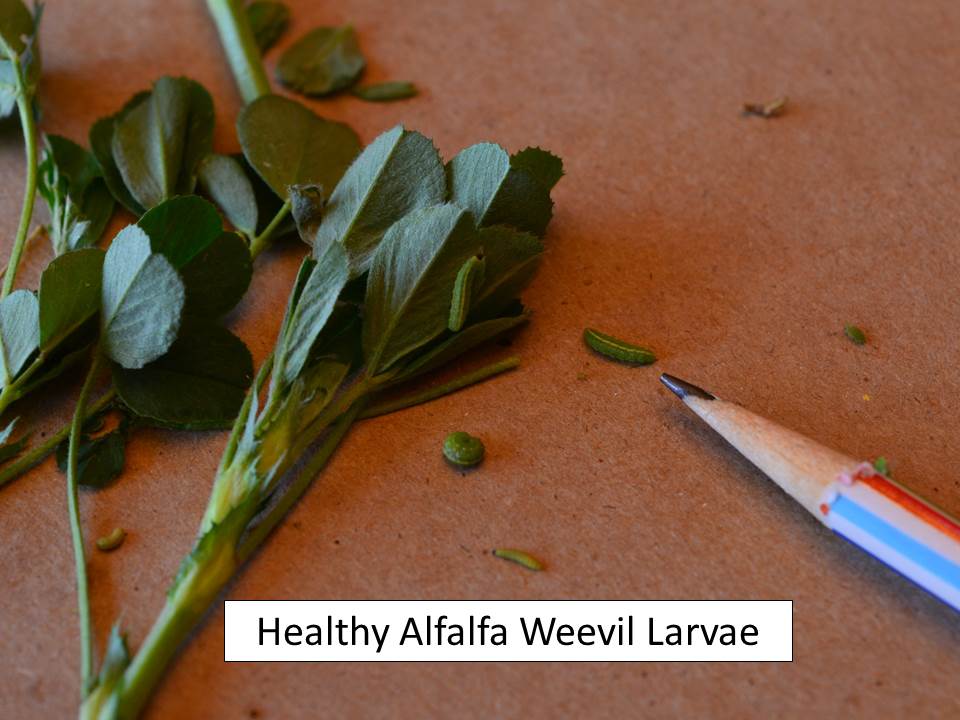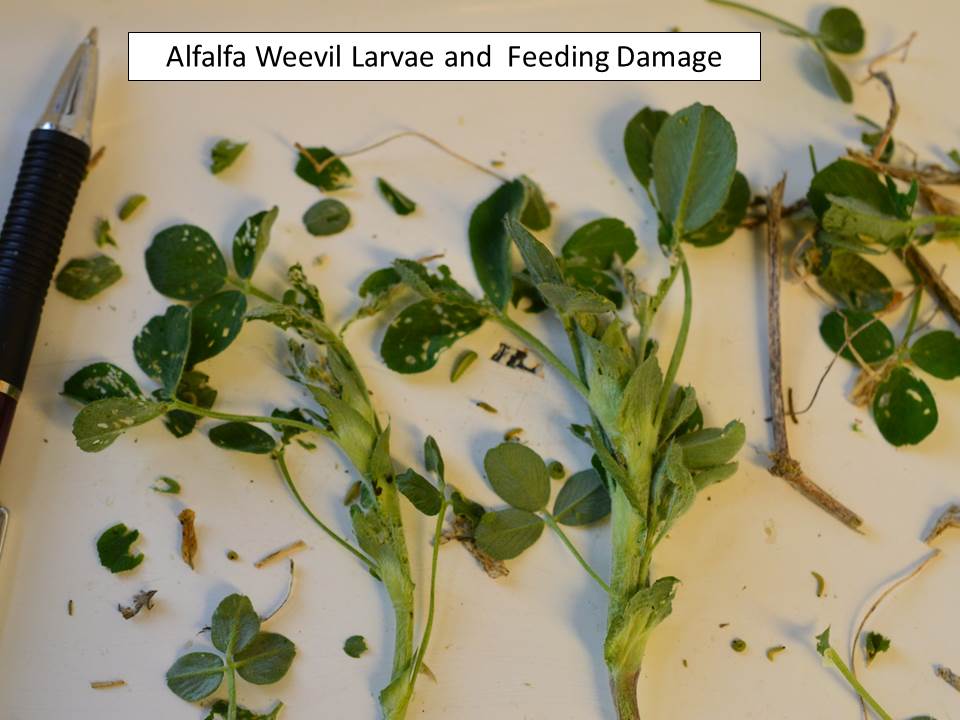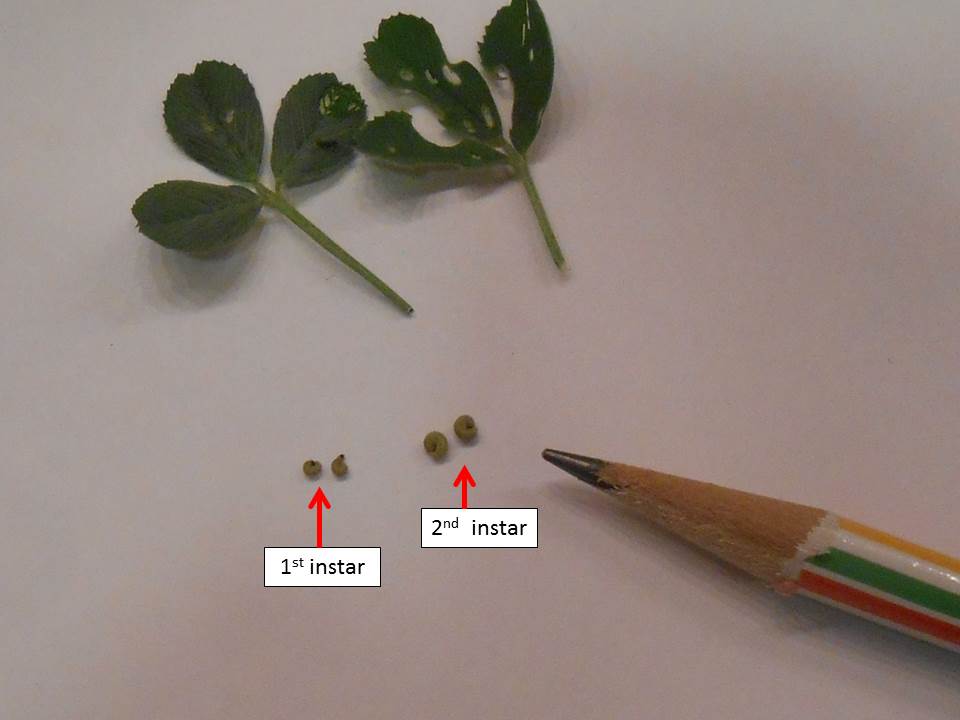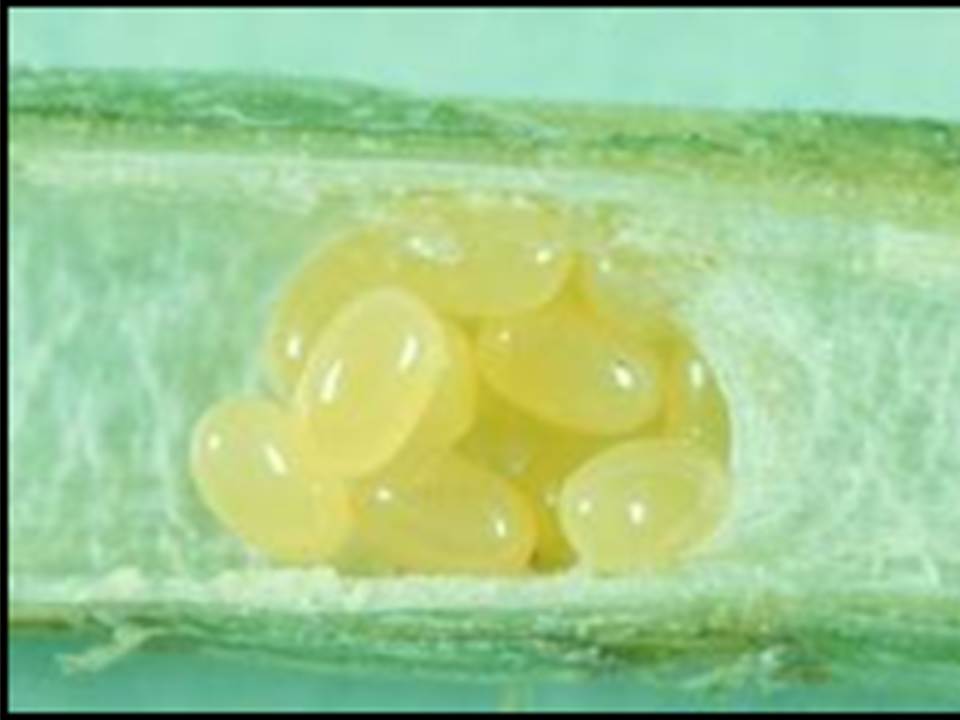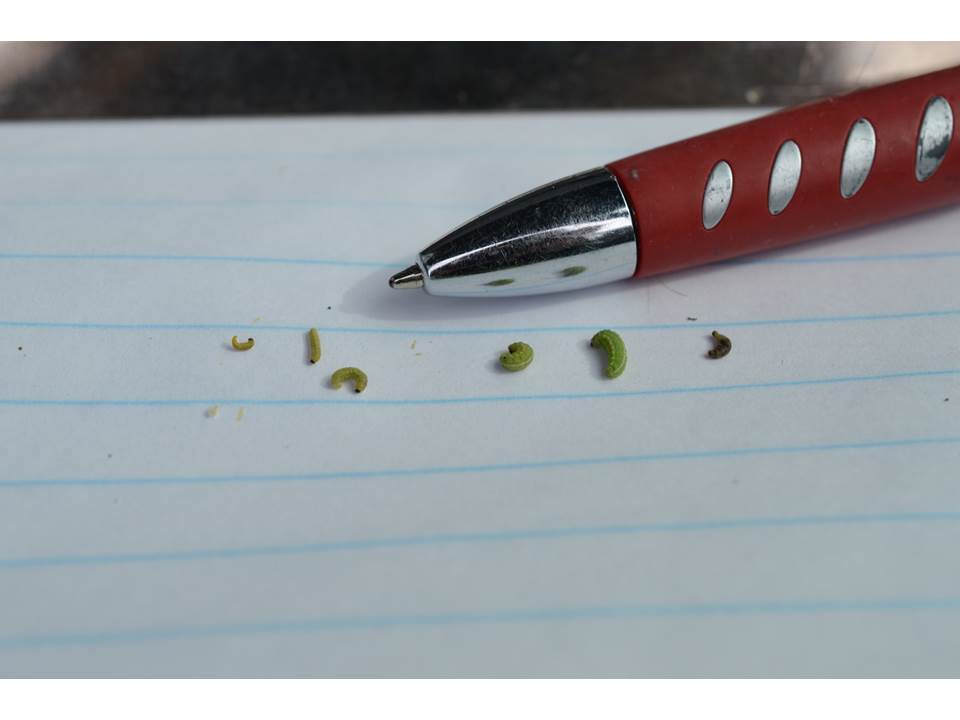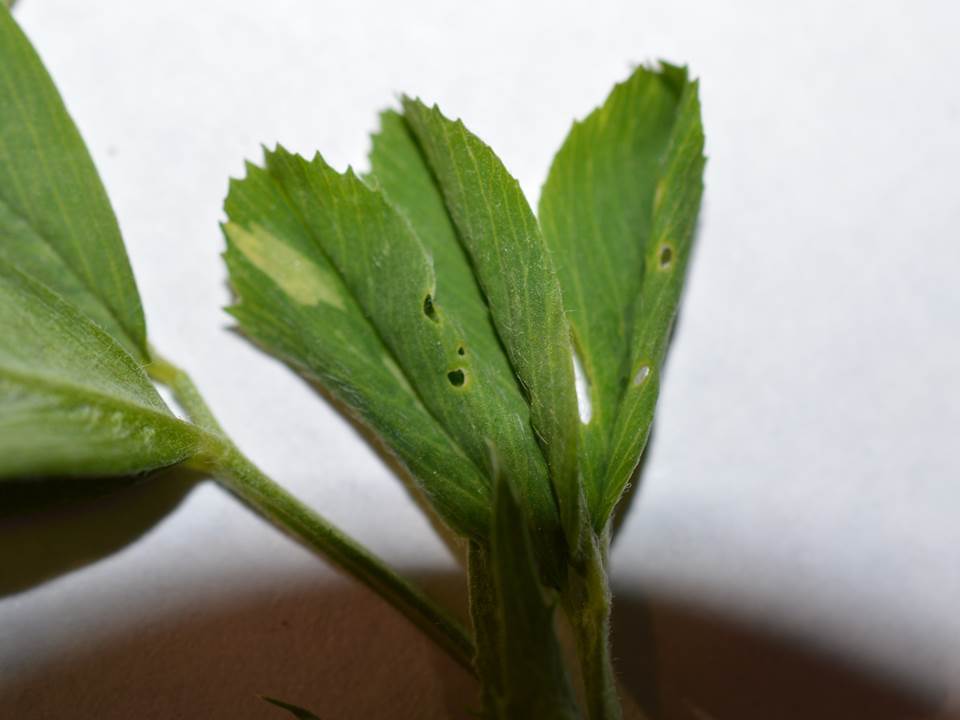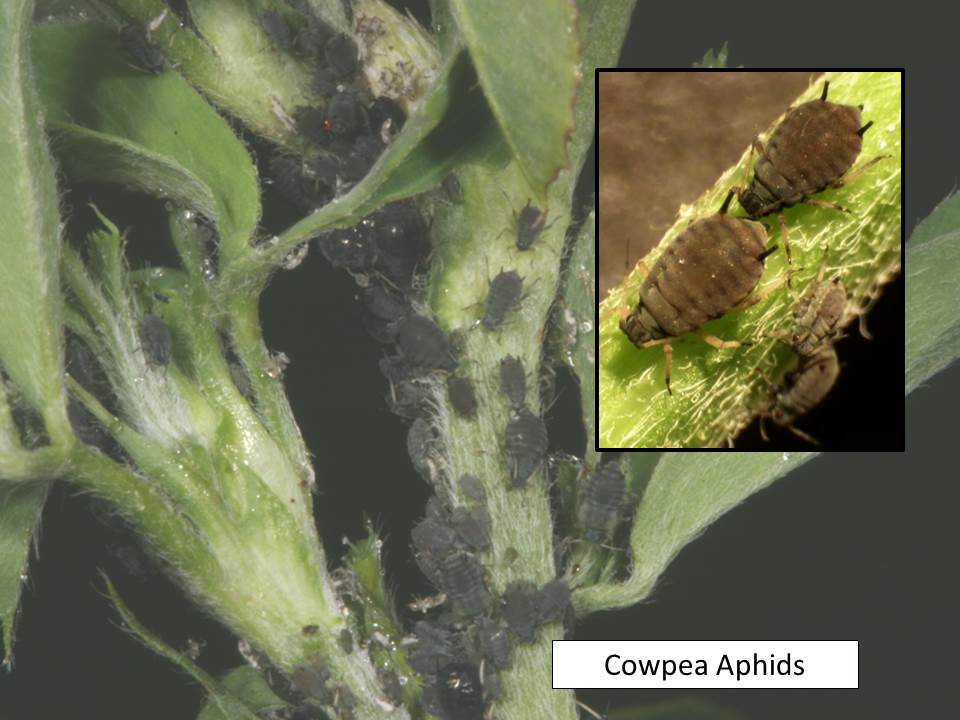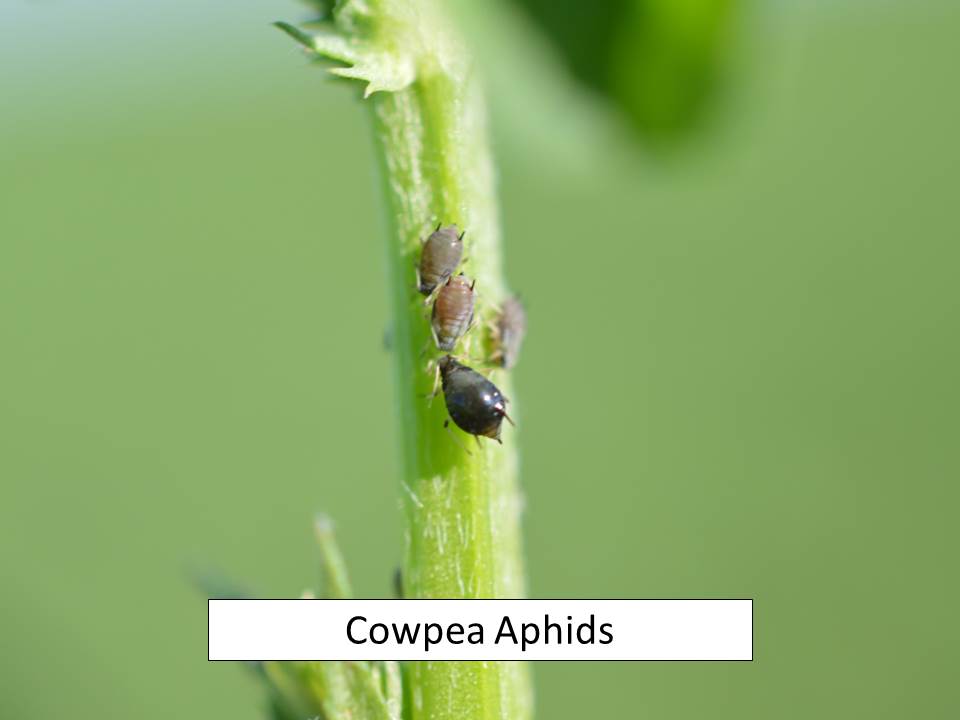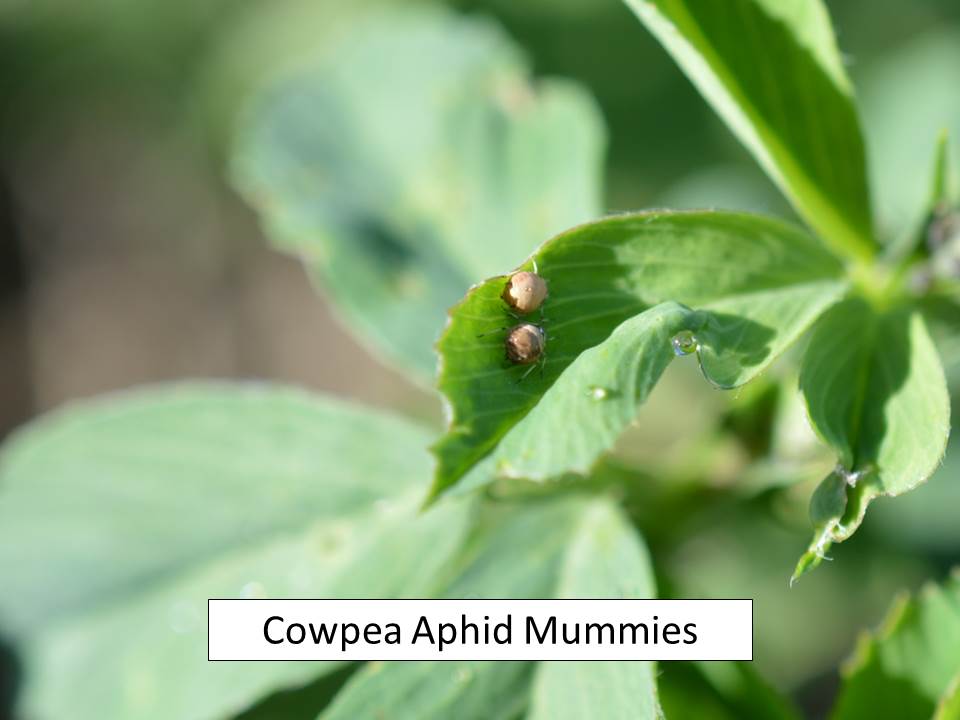–by Dr. Jeff Whitworth and Dr. Holly Schwarting
Alfalfa weevils are still very active throughout north central Kansas. They also range in development from small 1st instar larvae to relatively mature 3rd instars.
We have also had reports of pupae in south central and north central Kansas. Many fields are still showing signs of freeze damage.
The freeze did seem to affect the weevils by slowing their development but did not kill them. However, most larvae in freeze-damaged fields are more yellow than the usual greenish color. Whether that means they are getting the proper nourishment from the yellowed, freeze-damaged alfalfa tissue or not is unknown.
Weevil larvae in untreated, non-freeze-damaged fields seem mostly about to pupate within 7-10 days if temperatures stay between 45-80°F. No other pests have been noted in alfalfa fields we visited over the past week.


